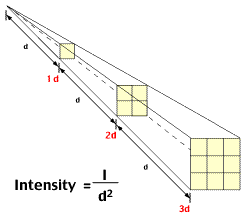 |
T436 - Fall 2011 - Week 6 Agenda:
This week we begin production!
Notes: Producers: Producers need to act weeks ahead of production to secure talent. Coordination of talent, locations and crew is one of the most challenging parts of your job. The production schedule is online. We still need to add stories to weeks 5 & 8. As you revise scripts for the first two weeks, make sure that the stories make us think, "What will happen next?" Also remember that as a Director, you should be an efficient storyteller. Unless a scene or shot has a specific purpose (develops story or character, serves as an editing aid, etc.) then it should not be in the script or shot list.
BLOGS - Please note that from this point on, everyone needs to update their blogs weekly. In addition, key crew members should be completing production / crew reports. I'd like to collect these starting next Monday. Be sure to clearly identify your role for each production you are working on and what challenges you encountered. Please note that you will be working in a variety of roles for different pieces at the same time. A note on filters: Many enhancements can be done in post. The controlled environment of an editing bay can be a good place to experiment with different "looks". Why use in the field, as opposed to post?
A note on using light meters and proper exposure It's important to understand the relationship between 3 key components:
Unlike being able to select a film stock of a particular speed, the ISO of the video cameras we use in class is unchangeable (Which is roughly around 200 ISO). We can reduce the shutter to something greater than 1/60th of a second, but this can negatively affect the image. This leaves us with changing the aperture- and controlling the light coming into the camera. Inverse Square Law The inverse square law applies to radiating energy sources, such as sound, light, radio waves, and gravity. It states that the quantity (strength) of the source is inversely proportional to the square of the distance from the source.
Everyone understands that light gets dimmer as you move away from it. The same is true of sound. You move further away form something and it gets fainter. The inverse square law provides a mathematical framework to quantify the value of the diminishing energy.
Assume we measured a light source at 1d and found it to be 36 foot-candles. 1d = 36 ft-candles At twice the distance (2d) we'd find it to be 1/4th the intensity, or 9 footcandles At three times the distance (3d), we'd find it to be 1/9th the intensity, or 4 footcandles Here's a nice explanation of it: http://www.youtube.com/watch?v=F-xNMdIXJIs
|
|
|
|

